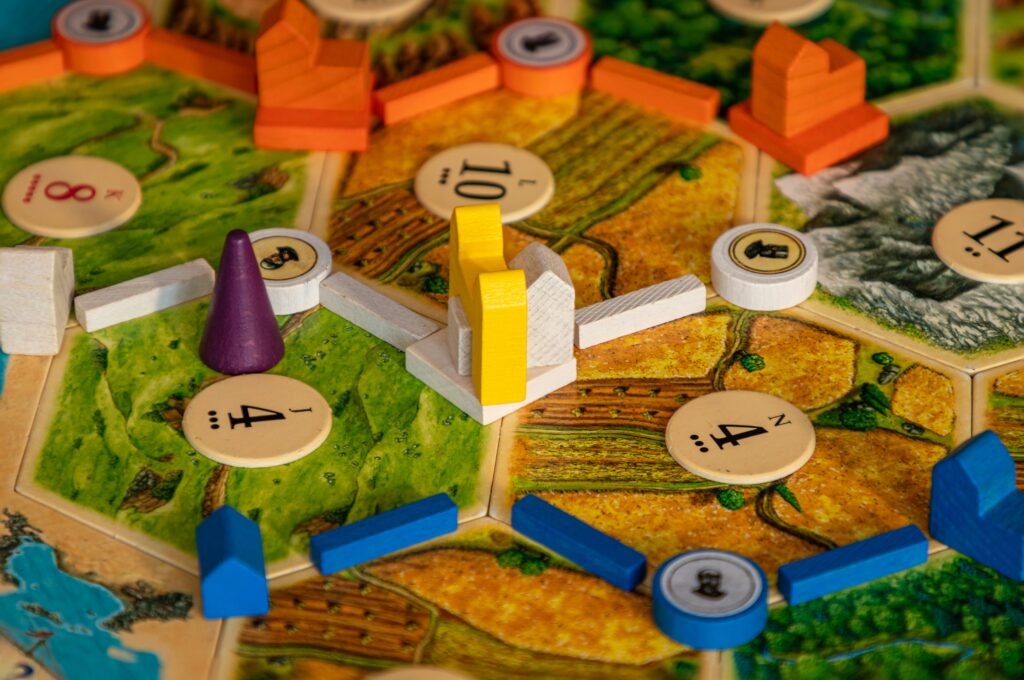The Transition to 3D: A New Era for Game Design
Stepping Into 3D (Late 90s to Early 2000s)
The late 1990s and early 2000s marked a major turning point in gaming history: the move from 2D to 3D environments. This shift wasn’t just about better graphics; it completely redefined how games were designed and experienced.
- Developers had to rethink movement, interaction, and spatial awareness
- Classic genres had to be reimagined for three-dimensional play
- Players were introduced to more dynamic and immersive worlds
This transition opened up exciting possibilities but also introduced complex challenges that reshaped the industry.
Early Challenges in 3D Game Development
As developers navigated this new frontier, several core issues emerged:
1. Player Navigation:
Creating intuitive pathways in a 3D space proved more difficult than in 2D. Players could get lost more easily, forcing level designers to invent visual cues and landmarks.
2. Camera Control:
Camera behavior became one of the most frustrating obstacles. Fixed camera angles often clashed with player movement, while early dynamic cameras struggled to track smoothly.
3. Level Design Complexity:
Designing three-dimensional spaces required a deeper understanding of scale, verticality, and player freedom. Linear levels gave way to open, explorable environments.
A Shift in Expectations and Priorities
As 3D gaming matured, so did the expectations of players. Realism, immersion, and interactivity started to take center stage. This meant that developers had to prioritize:
- Better physics and collision systems
- More cinematic storytelling and character animation
- Technical performance to support larger, more detailed worlds
The move to 3D catalyzed a shift in how games were valued. It was no longer just about gameplay mechanics; visual fidelity, narrative depth, and environmental scale became equally important.
The lessons learned during this era still influence game development today.
Introduction
Vlogging didn’t vanish when the internet got louder. It doubled down. Through algorithm shifts, audience fatigue, and the rise of new tech, creators kept filming, editing, and posting. The medium stayed resilient because it gave something other formats couldn’t: a direct, human connection.
But change is always creeping in. In 2024, the changes aren’t subtle. Platforms are tweaking algorithms, short-form isn’t just trendy—it’s the standard—and AI isn’t waiting on the sidelines anymore. Technology keeps driving the tools, but it’s creativity that fills the frame.
Veteran creators notice the cycle. Every few years, the landscape resets. That push and pull between content and code—that’s the fuel. This breakdown is here to cut through the noise. Not just to show what’s new, but to highlight what matters. The goal? Use the moment, learn from the shifts, and keep moving forward.
In the early days of video game design, the constraints were brutal. Developers in the 1980s and 1990s had to work with tiny amounts of memory, limited processing power, and a strict 2D framework. What they couldn’t build in technical complexity, they had to make up for with cleverness and heart.
Design choices were shaped by what was possible, not what was ideal. Sprites had to be small to save memory. Frame rates were kept tight to avoid overloading the system. And with 3D still years away from being practical, everything had to work within the logic of a flat screen. Yet somehow, those limits led to some of the most iconic, enduring game mechanics and worlds we’ve ever seen.
Storytelling didn’t take a back seat—it just had to evolve. Without voice acting or long cutscenes, narrative came through in atmosphere, pixel art, and tight dialogue boxes. Games like The Legend of Zelda and Metroid hinted at bigger worlds without spelling everything out. The limitations forced creativity. And that’s what made early game design feel so personal—it was minimal, but intentional.
Game Development is Going Community-First
Building for Everyone: Accessibility and Inclusivity
In 2024, game developers are facing rising expectations to make their titles more accessible and inclusive from day one. This isn’t just about adding subtitles or colorblind modes—it’s about creating experiences that speak to a wider range of players.
Key areas of focus:
- Control customization to accommodate different physical needs
- Inclusive narratives and diverse character representation
- Sensitivity settings to make experiences more welcoming
This approach not only broadens your player base but also creates more loyal communities.
The Feedback Loop: Community as Co-Developers
Games are no longer built in a vacuum. Studios and indie creators are leaning into community feedback more than ever, using early access models and public betas as real-time development tools.
Benefits of feedback-driven development:
- Quicker iteration cycles based on real user data
- Stronger player buy-in before the full release
- More polished launches and fewer major overhauls later
When players feel heard, they stay engaged.
Casual vs. Hardcore: Bridging the Gap
Successfully balancing casual and hardcore audiences is one of the biggest challenges in game design today. Developers are finding smart ways to cater to both ends of the spectrum by designing games with scalable complexity.
Tactics that work:
- Layered mechanics that offer depth for veterans without overwhelming newcomers
- Adaptive difficulty levels and mode customization
- Community-led content like mods, challenges, or co-op missions
The goal isn’t to please everyone equally, but to give every type of player a reason to keep coming back.
Advanced game engines like Unreal and Unity have redefined how vlog content is imagined, produced, and distributed. According to veteran creators who’ve worked across both platforms, the leap in real-time rendering, virtual backdrops, and precision lighting has taken production value from homemade to cinematic—without Hollywood budgets.
But it’s not just about the tech. The typical vlogging pipeline has matured. Where it once took a few DIY creators juggling every task, now we’re seeing small teams operating like agile production studios. Editors, motion graphic artists, thumbnail designers, and even data strategists are part of the workflow for many creators who treat vlogging as a full-time business.
Modular design and built-in collaboration tools inside these engines have flattened the learning curve and sped up execution. Teams across time zones now share assets, build reusable media kits, and iterate episodes with near-frictionless efficiency. The future of vlogging isn’t solo—it’s smart collaboration baked right into the creative stack.
Some lessons in game design are etched in scar tissue. Ask veteran designers what they’d never go back to and you’ll hear the same refrains: convoluted HUDs, overly punishing mechanics, and trying to make every player happy. Many openly admit that chasing trends without vision led to forgettable or even broken releases. In hindsight, features like mandatory motion controls or shoehorned multiplayer were distractions, not innovations.
Still, some flops added value. Titles like “E.Y.E: Divine Cybermancy” or “Too Human” didn’t hit their marks commercially but made bold moves that influenced future work. They tested boundaries, sparked debate, and, in some cases, became cult favorites. Failure in design doesn’t always mean failure in impact.
And through all the changes—platforms, genres, monetization schemes—the fundamentals have stayed put. Clear feedback loops. Intuitive controls. A sense of player progression. These bones haven’t changed because they work. Styles shift, tools evolve, but players still want to enter a space, understand the rules, and feel something real. Veteran or rookie, that’s the north star.
Games as Live Systems
Modern games aren’t just one-and-done experiences anymore. The trend is clear: longevity is the goal, and live systems are how developers are getting there. That means regular content drops, balancing updates, seasonal events, and meta shifts—all designed to keep players checking back in. Vloggers covering these games need to treat updates like news cycles. When a patch hits, when a pro player breaks the meta, when a community event pops off—being first, being clear, and being insightful makes your content sticky.
Another shift is the growing influence of spectators. Developers are building with viewers in mind, not just players. Mechanics are getting sharper visual cues, faster payoffs, and more moments built to impress on stream. This is turning streaming and vlogging from adjacent content into a central feedback loop. When creators highlight what’s hype and what’s stale, they shape the way games evolve.
For deeper analysis on this shift, check out: How Esports Analysts Break Down Competitive Matches.
If you’re designing games today, forget the flash and focus on the foundation. Experienced devs will tell you—player agency, tight mechanics, and clear feedback loops still matter more than shiny graphics or trend-chasing features. The tools have evolved, sure, and the pipelines are faster, but the fundamentals haven’t changed. A good game respects the player’s time, provides meaningful choices, and builds satisfaction through skill.
Looking back is just smart strategy. The best innovations often come from remixing what already worked. Whether it’s the emergent gameplay of early sandbox titles or the emotional pacing of old-school JRPGs, the past holds blueprints. Use them. Strip them down. Then push forward.
Game design is more than shipping a product. It’s a craft. Every mechanic, every line of dialogue, every level layout tells the player something—about your world and how to live in it. Respect the lineage. Know the shoulders you’re standing on. And then build something real, not just reactive.





